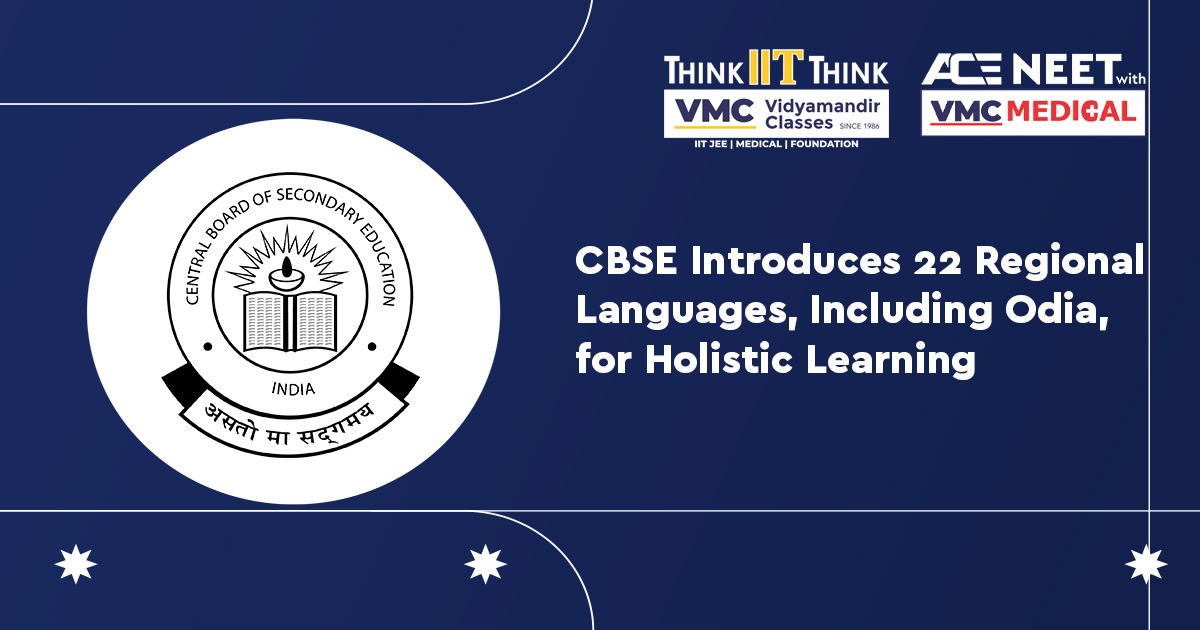Embracing Diversity: CBSE Introduces 22 Regional Languages, Including Odia, for Holistic Learning
 Posted On
Posted On
413 total views, 2 views today
In a groundbreaking move, the Central Board of Secondary Education (CBSE) has ushered in a new era of inclusivity and cultural diversity in the Indian education system. Union Education Minister Dharmendra Pradhan announced on Saturday that CBSE schools nationwide will now teach 22 regional languages, including Odia, alongside Hindi and English. This move aligns with the vision of the New Education Policy (NEP), which aims to empower students by allowing them to learn in their mother tongue. By embracing this linguistic diversity, CBSE seeks to enhance the quality of education and foster a deeper understanding of subjects among students.
Unlocking the Potential of Regional Languages
Until now, Hindi and English have primarily served as the dominant languages of instruction in CBSE schools. However, the recognition of regional languages as a medium of education offers a multitude of benefits. Studies have shown that students tend to grasp concepts more effectively when taught in their native language. This is because a familiar linguistic context facilitates better comprehension and retention, ultimately leading to enhanced academic performance.
By embracing regional languages, CBSE is not only acknowledging the cultural richness of India but also ensuring that students can confidently express themselves and connect with their roots. Learning in one’s mother tongue promotes a sense of identity and pride, and it fosters a deeper appreciation for diverse cultural heritage.

Inclusive Education for All
The decision to introduce 22 regional languages, including Odia, from grade 1 to 12 is a testament to the government’s commitment to inclusive education. It ensures that students hailing from different regions and linguistic backgrounds have equal opportunities to thrive academically. No longer restricted to Hindi or English, pupils can now explore the world of knowledge through the lens of their own language, breaking down barriers and empowering them to reach their full potential.
Accommodations for Language Preferences
Recognizing that this transition may present challenges for some students and teachers, CBSE has mandated that schools make necessary accommodations to facilitate learning in regional languages. This ensures that students who wish to study in Odia or any other language can do so without hindrance. The inclusivity measures extend to providing textbooks in regional languages, with the National Council of Educational Research and Training (NCERT) tasked with developing appropriate learning materials.
Creating a Learning-Friendly Environment
To successfully implement this ambitious initiative, CBSE plans to develop comprehensive strategies for offering instructions and conducting examinations in regional languages. The aim is to create a conducive learning environment that nurtures creativity, critical thinking, and holistic development. This approach will enable students to explore subjects in-depth and articulate their thoughts more effectively, thus contributing to their overall growth.
Benefits of Learning in Regional Languages
The benefits of learning in regional languages extend beyond academic achievements. Language is an essential aspect of culture, and when children learn in their mother tongue, they develop a deeper connection to their heritage and traditions. Moreover, it enhances cognitive abilities, as research suggests that multilingual individuals tend to be more adept at problem-solving and exhibit greater cognitive flexibility.
By fostering multilingualism, the education system is preparing students to be global citizens who can bridge cultural gaps and communicate effectively in an interconnected world. It also helps preserve linguistic diversity, which is crucial for maintaining India’s rich cultural tapestry.
The Role of Teachers in Implementing the Change
The successful execution of this language initiative hinges on the role of teachers. They play a pivotal part in making the transition seamless and effective. Therefore, teachers will need training and support to teach effectively in regional languages, ensuring that the quality of education remains uncompromised. Professional development programs can empower teachers to become proficient in delivering lessons in multiple languages and adapting to diverse learning styles.
Final Thoughts
The introduction of 22 regional languages, including Odia, in CBSE schools marks a significant step towards a more inclusive and culturally diverse education system. By recognizing the importance of learning in one’s mother tongue, the government is empowering students to achieve academic excellence while fostering a deep-rooted connection to their heritage. This initiative not only enhances the quality of education but also celebrates India’s linguistic diversity, making a powerful statement about the country’s commitment to nurturing the next generation of enlightened and inclusive citizens.
As CBSE paves the way for other educational boards to embrace regional languages, it sets an inspiring example of how language can be a bridge to knowledge, understanding, and unity in a nation as diverse as India. The journey towards a truly inclusive education system may be challenging, but it is undoubtedly one that holds the promise of a brighter and more harmonious future for generations to come.




